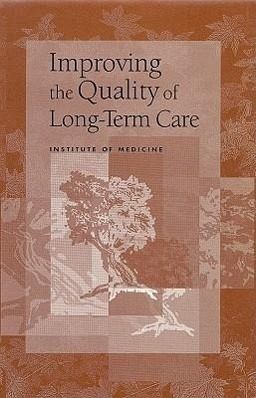
Improving the Quality of Long-Term Care
Versandkostenfrei!
Versandfertig in über 4 Wochen
57,99 €
inkl. MwSt.

PAYBACK Punkte
29 °P sammeln!
Among the issues confronting America is long-term care for frail, older persons, and others with disabilities that limit their ability to care for themselves. Even now, an estimated 10 million people receive some form of long-term care. Continuing to Improve the Quality of Long-Term Care takes a comprehensive look at the quality of care -- and quality of life -- in long-term care, including that provided by nursing homes, home health agencies, assisted living facilities, family members, and a variety of others. This book describes the current state of long-term care, identifying problem areas ...
Among the issues confronting America is long-term care for frail, older persons, and others with disabilities that limit their ability to care for themselves. Even now, an estimated 10 million people receive some form of long-term care. Continuing to Improve the Quality of Long-Term Care takes a comprehensive look at the quality of care -- and quality of life -- in long-term care, including that provided by nursing homes, home health agencies, assisted living facilities, family members, and a variety of others. This book describes the current state of long-term care, identifying problem areas and offering recommendations for federal, state, and local decisionmakers. Who uses long-term care? How have the characteristics of this population changed over time? What pathways do people typically follow into and through long-term care? The committee provides the latest information on these and other key questions. This book explores strengths and limitations of methods to measure, oversee, and improve the quality of long-term care. It works through the difficult issues of defining and assessing quality, implementing the principles of person-centered care, setting and enforcing standards of care, strengthening the long-term care work force, paying for quality care, and expanding the knowledge base to guide organizational and individual caregivers.












